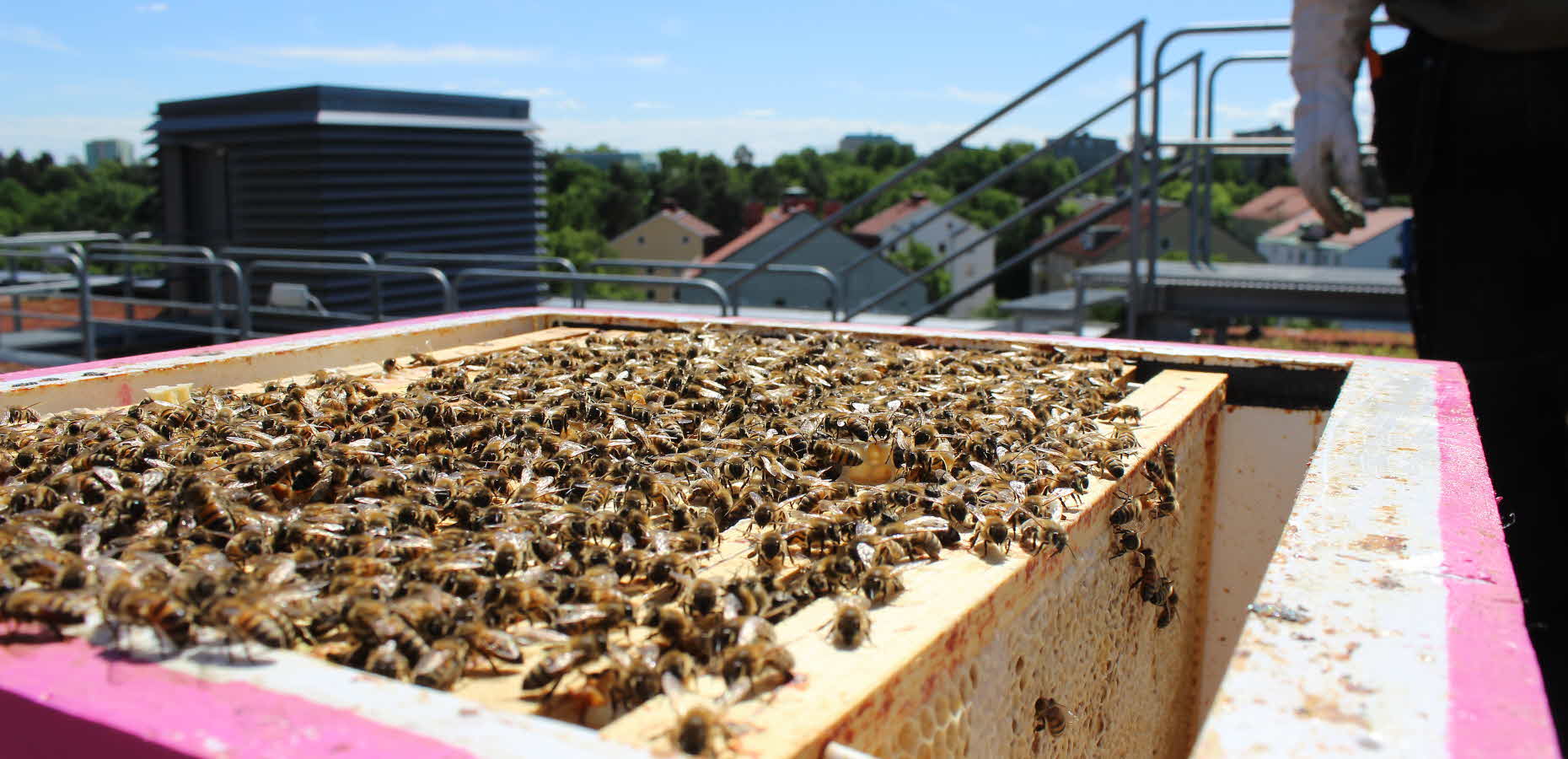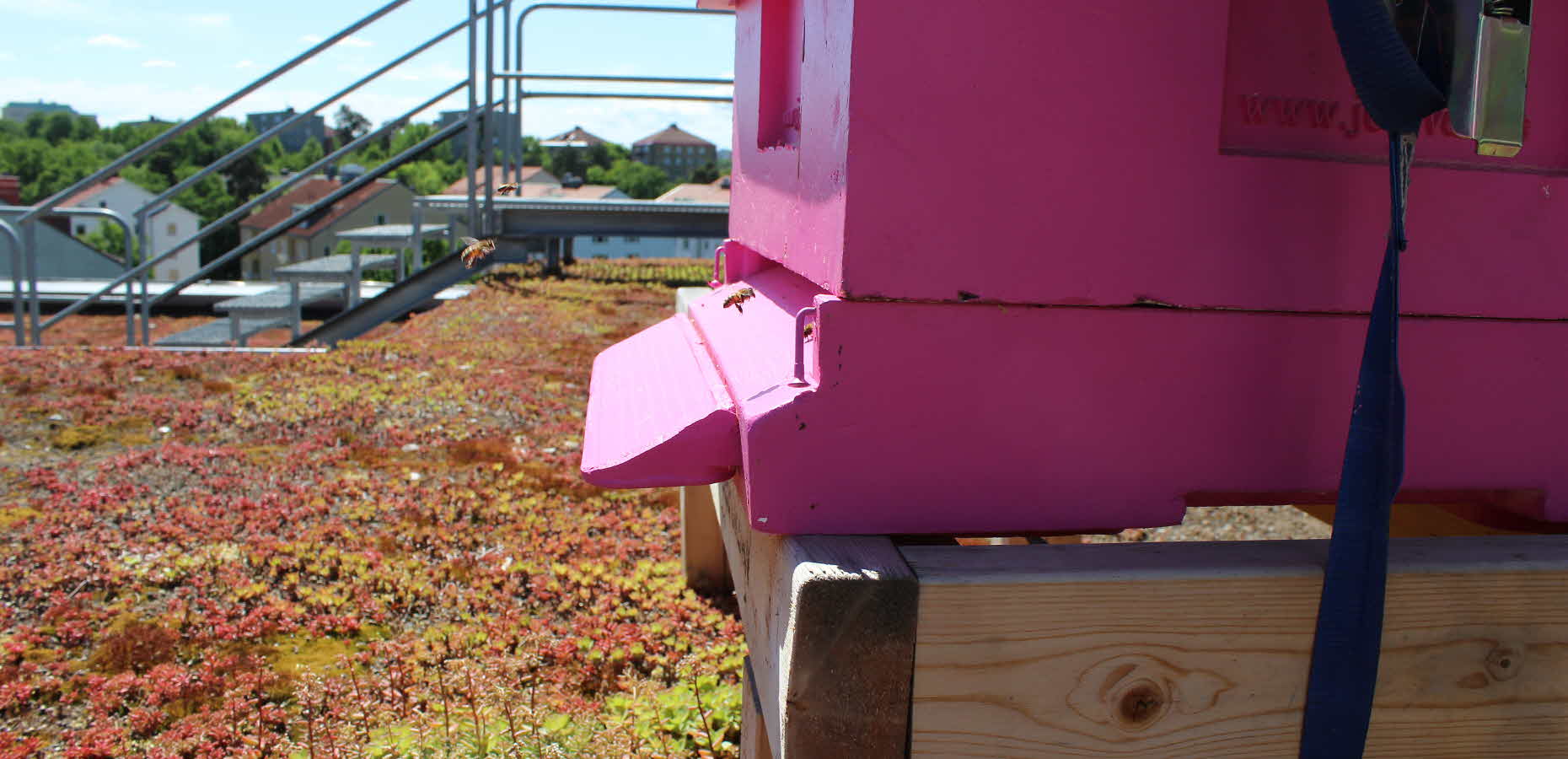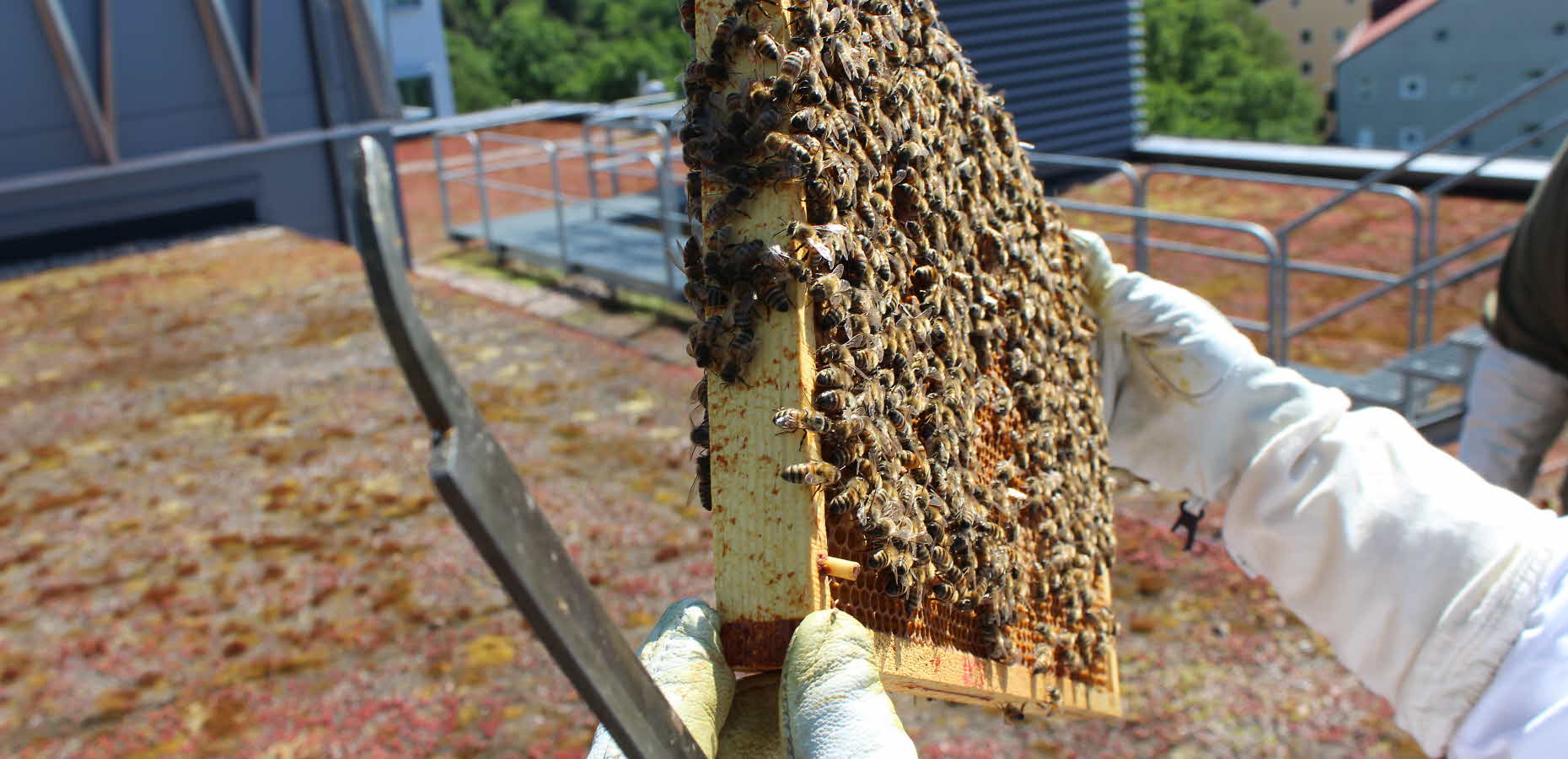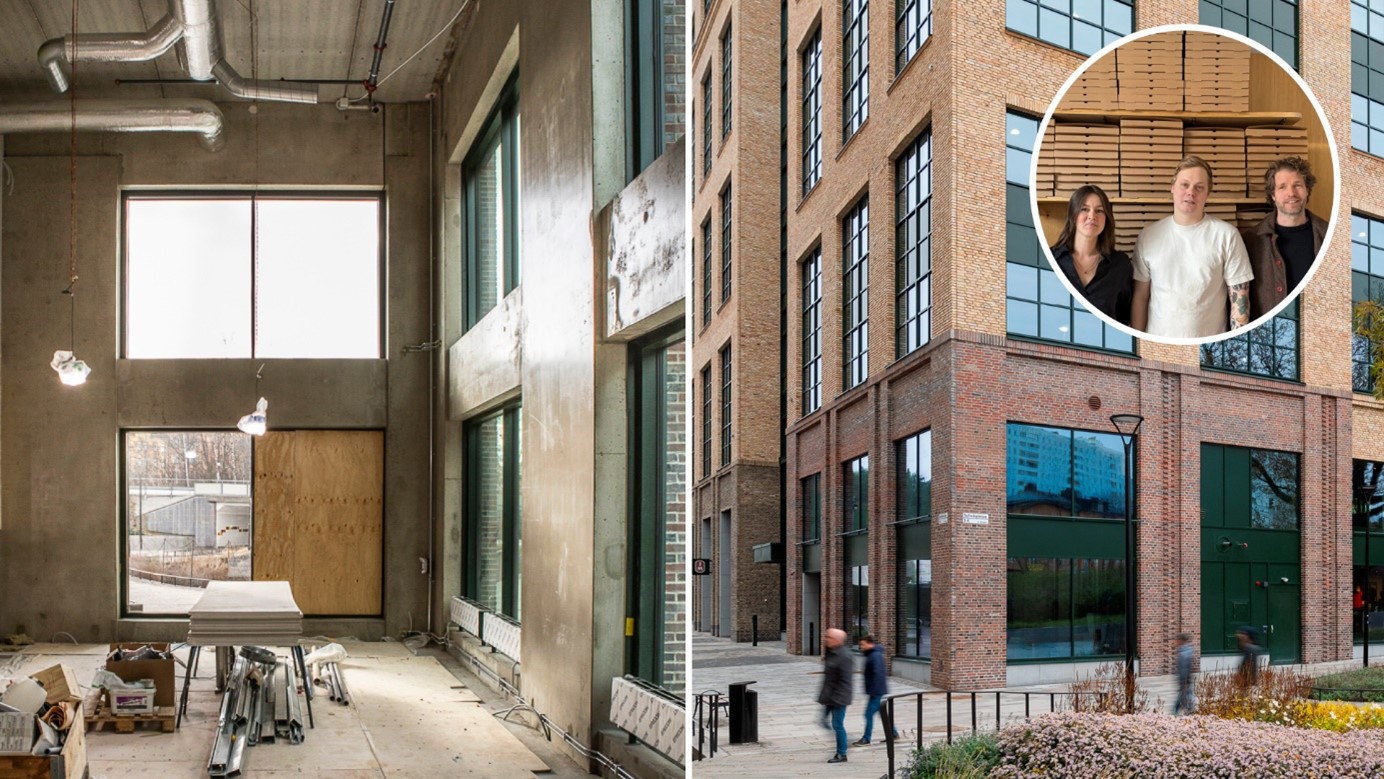Many keen to sponsor
There’s clearly a considerable level of demand to sponsor a beehive in the city. Bee Urban now has around 70 sponsored hives across Stockholm county. Many companies want to help with their work.
“We want to give something back to nature following a number of disruptive years of construction in Arenastaden,” says Johan Belin, Property Manager at Fabege. “The bees and what they do are so incredibly important, which is why we want to support both beekeeping and help spread knowledge about it.”
So Fabege and Bee Urban organise regular viewings of the hives for tenants. The purpose is to explain what the sponsorship arrangement is doing for the environment, and to demonstrate that bees are not dangerous, but in fact very peaceful insects.
Organic honey
Bee Urban uses organic methods, but getting the honey classed as organic requires a guarantee that the bees gather nectar from plants that are in turn organically grown. This is no easy feat in an urban environment, as you can’t be absolutely sure that plants growing nearby are organic.
Plenty of wax – it is time!
A beehive is of course made up of various drawers, with ten frames inside. Some of these drawers are called ‘super honey chambers’, which is where the bees store the honey they produce and whatever is to be saved for the winter. Honey is the bees’ winter food and so it’s important to leave enough for them to survive. When two thirds of the frame is covered with beeswax, it’s time to harvest the honey. Josefina Oddsberg and her colleagues regularly monitor the amount of wax.
“The bees produce more honey than they need for the winter, which means we can draw off the surplus in jars and give it to our customers,” she explains.
This years harvest in kilos
This year, Josefina Oddsberg expects the amount of honey from the hive in Arenastaden to total around 30 kilos. Of this amount, the bees get to keep 10 kilos and the remaining 20 kilos go to the tenants.
“Many companies give the honey away as a gift to their employees,” says Josefina. “But one company sold its jars to customers and donated the money to a charity, so it really can be a win-win situation on many levels.”
Other ways to sponsor nature
If you don’t want a beehive on your office roof, you can instead sponsor one or more nesting boxes for birds, or a bee hotel. Because we need more homes for birds and wild bees too. There are also opportunities to sponsor urban and community gardening to encourage biological diversity. Contact Bee Urban for further information.





